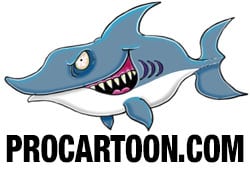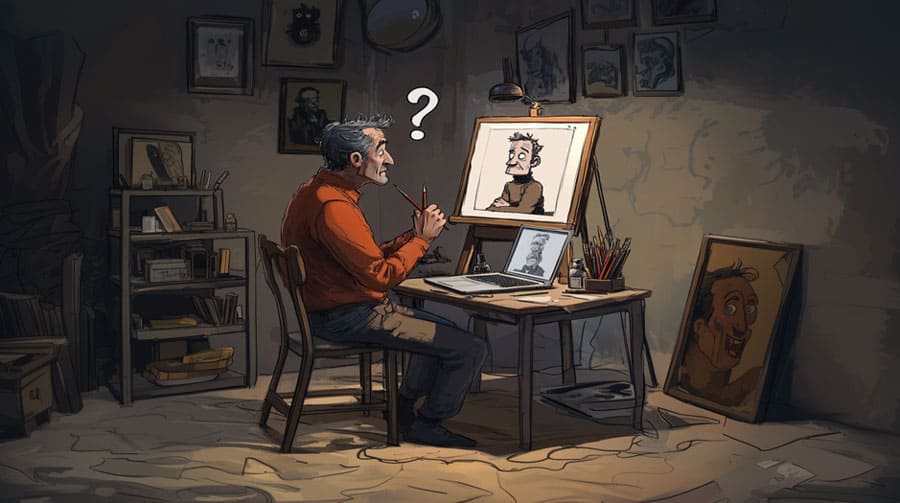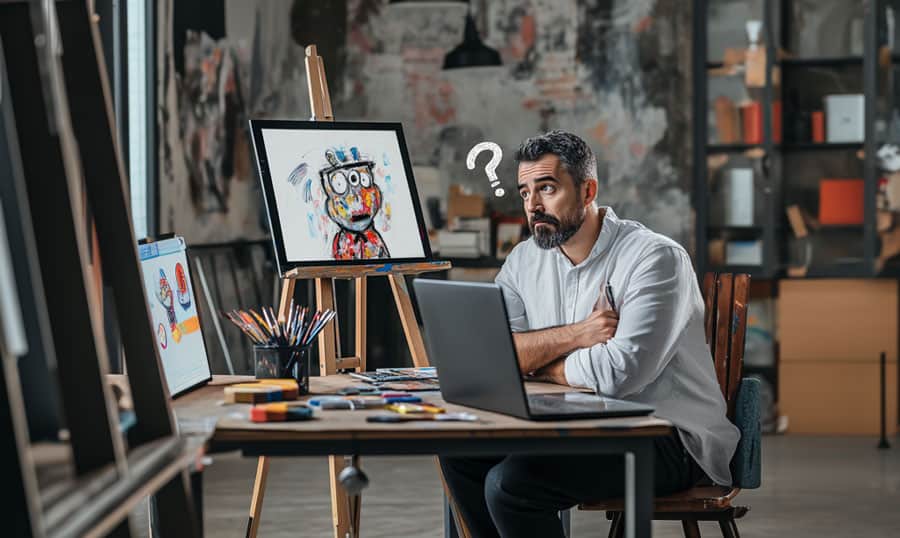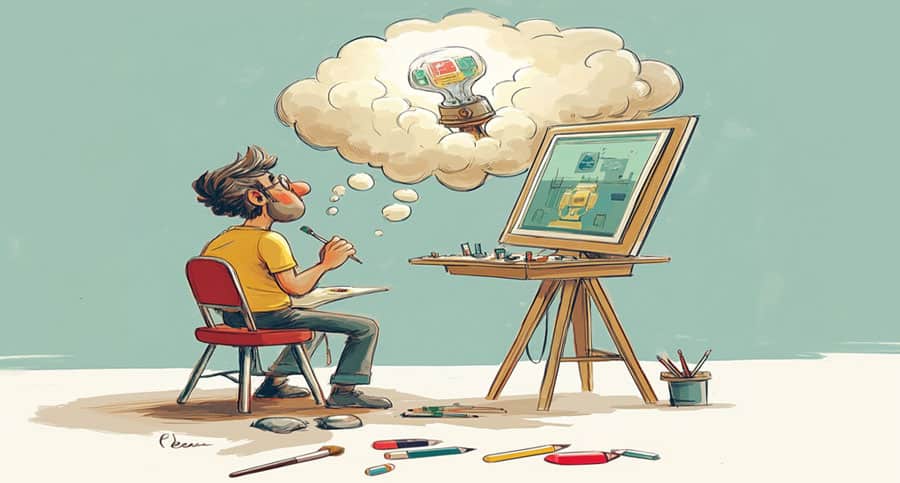AI for Cartoonists – Blessing or a Curse?
In this article, we’ll explore the benefits and potential pitfalls of using AI in cartooning, provide examples of how AI can be used without overshadowing human creativity, and discuss ethical considerations and best practices to help professional and aspiring cartoonists make the most of these technologies without compromising their unique artistic voices.
The Rise of AI in the Art World: Where Cartoonists Fit In
In recent years, AI-generated artwork has gained substantial attention, with algorithms creating anything from photorealistic images to stylized illustrations. Tools like Midjourney, DALL-E, and Stable Diffusion can produce a wide range of artistic styles that resemble the work of human artists. For cartoonists, these technologies can be valuable aids in visualizing characters, experimenting with new styles, and building scenes faster than traditional methods allow. However, for many artists, the fear of AI-generated art becoming indistinguishable from their own creations is real, raising concerns about the future of the profession.
Cartooning, an art form that thrives on personality, satire, and expressive style, sits at a unique intersection in the AI art debate. Unlike general illustration, cartooning depends heavily on storytelling and individual style, which is challenging for AI to replicate authentically. As AI tools become more prevalent in the cartooning process, the opportunity to use them responsibly while preserving originality becomes increasingly important.
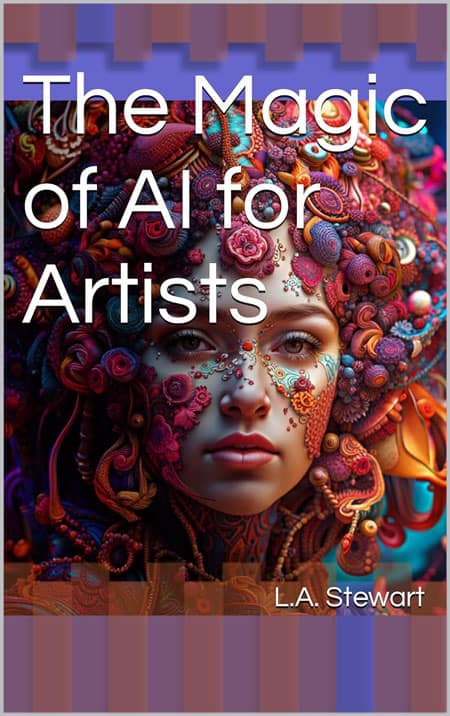
How AI Can Be a Blessing for Cartoonists
1. AI for Cartoonists as a Creative Assistant
One of the most beneficial aspects of AI is its ability to act as a “creative assistant.” For cartoonists, this means having a tool that can help brainstorm concepts, suggest color palettes, or generate unique ideas. AI algorithms can produce thousands of variations based on a prompt, allowing cartoonists to explore countless design possibilities quickly. This process can serve as an initial ideation phase, saving artists hours of brainstorming and letting them jump directly into refining the best concepts.
For example, AI platforms like Midjourney can be used to experiment with a cartoon character’s appearance, using simple prompts to generate variations in style, color, or costume. Instead of starting from scratch, a cartoonist can sift through AI-generated suggestions, selecting and modifying elements that resonate with their artistic vision. This approach allows artists to maintain control while using AI as a springboard for creativity.
2. Enhancing Backgrounds and Complex Scenes
Creating intricate backgrounds and scenes can be time-consuming, especially for cartoonists focusing on character-driven narratives. AI tools can help generate background concepts or architectural details that may otherwise require hours of research and rendering. A cartoonist can prompt AI to create an initial scene composition, like a busy marketplace, futuristic cityscape, or enchanted forest, and then refine and adjust it to match their style.
Using AI as a foundation for these elements enables cartoonists to allocate more time to character development, story progression, and other critical aspects of their work. By blending AI-generated elements with personal style, cartoonists can streamline their workflow without losing control over their creative voice.
I use this function in AI to get a sense of the overall scene in a cartoon but only to generate ideas. Originality of the main ‘punch’ of the cartoon is sacrosanct to me but a little help in visualising and kickstarting my creative juices is always helpful and has saved so much time, without compromising my own style.
One area I use AI is for my book covers. I write scifi and to employ a professional book cover artist just makes publishing a book so expensive – hundreds of dollars for a great cover. I tried to do this myself but book covers are not my forte. I have been using PhotoShop for years so layering images and text on PhotoShop to create my own book covers and book adverts has saved me thousands of dollars – here are some examples:

3. Experimenting with Style Variation
For cartoonists interested in exploring different visual styles, AI can serve as a valuable experimentation tool. Cartooning often involves finding a unique voice, but that doesn’t mean an artist shouldn’t explore or adapt. By prompting AI tools with specific instructions, cartoonists can see their characters rendered in various art styles, from classic comic book aesthetics to minimalist and avant-garde looks.
This experimentation can be especially useful for projects that require stylistic diversity. For example, a cartoonist creating a comic series with flashbacks or alternate timelines could use AI to test how characters and scenes look in different historical or futuristic styles. This allows for creative exploration without the need for extensive preliminary sketches.
Additional Advantages of AI for Cartoonists
- Efficient Color Matching and Palettes: AI tools can suggest complementary color palettes, helping cartoonists achieve balanced, visually appealing results without hours of manual testing.
- Consistent Style Transfer: AI can apply consistent styles across multiple frames or illustrations, making it easier to maintain continuity across a project.
- Enhanced Storyboarding: AI can quickly generate storyboards, providing cartoonists with an efficient way to layout scenes and plan narrative flow.
- Error Correction and Detail Suggestions: AI algorithms can identify errors or suggest detail refinements, saving cartoonists from time-consuming revisions.
- Simplifying Repetitive Tasks: Tasks like repetitive background details, crowd scenes, or intricate patterns can be automated with AI, reducing burnout from redundant work.
- AI-driven Animation Assistance: Some AI tools can assist with basic animation sequences, giving cartoonists a framework to work from without replacing their creative input.
- Improved Workflow Management: AI can help organize assets, catalog reference images, and streamline digital workflows, especially for large projects.
- Customizable Character Generators: AI tools allow cartoonists to experiment with facial expressions, clothing, and body shapes for characters, providing a faster way to conceptualize designs.
- Real-time Feedback on Design Choices: Some AI models can evaluate design elements, giving cartoonists immediate feedback on color, composition, or contrast.
- Interactive Prototyping: AI allows cartoonists to create interactive prototypes or animatics quickly, offering insights into how characters will move or interact in a scene.
- Enhanced Accessibility and Inclusivity: AI can assist cartoonists with physical disabilities by providing tools that reduce the need for manual dexterity or precision.
If you would like to read up on how to use AI and all the benefits you can gain there is a wide selection of publications on Amazon specifically for artists here…
The Potential Pitfalls of AI for Cartoonists
1. Loss of Artistic Authenticity
One of the greatest risks of over-reliance on AI is the potential loss of artistic authenticity. Cartooning is an expressive art form where every line, expression, and color choice reflects the artist’s personality and viewpoint. While AI can mimic a style, it lacks the intent, humor, and cultural insight that make a cartoonist’s work distinct. There’s a danger that, by incorporating too many AI-generated elements, a cartoonist might lose the very quirks and imperfections that make their work unique.
The individual style of cartoonists like Charles Schulz of Peanuts fame or Matt Groening of The Simpsons is instantly recognizable, something that AI cannot yet replicate with genuine originality. For cartoonists aiming to build a recognizable brand, maintaining a personal touch is essential. Using AI sparingly as a tool, rather than as a replacement, helps safeguard authenticity and preserves the unique “hand” of the artist.
2. Intellectual Property and Ethical Concerns
AI for cartoonists raises significant ethical and legal questions, particularly around intellectual property. Most AI models are trained on existing images, including works by other artists, without explicit consent. This has sparked debates about whether AI-generated art constitutes copyright infringement. For cartoonists, this can be a delicate issue. Relying on an AI model trained on countless cartoons, many of which are proprietary, could potentially lead to unintentional plagiarism.
To mitigate these risks, it’s essential for cartoonists to use AI as a supplement to their creativity, not a substitute. By adjusting and customizing any AI-generated ideas, cartoonists can ensure their work remains original and true to their style, avoiding ethical dilemmas.
3. Dependency on AI at the Expense of Skill Development
While AI can expedite certain tasks, there’s a danger that over-reliance might stifle skill development. Mastering the craft of cartooning requires practice, an understanding of anatomy, color theory, and narrative techniques that AI can’t replace. Becoming dependent on AI for shading, composition, or even ideation could lead cartoonists to lose their edge, as they might miss opportunities to deepen their skills through traditional methods.
To avoid this trap, cartoonists can strike a balance by using AI to assist, not replace, their workflow. Skills like manual sketching, inking, and studying real-life references still play a crucial role in maintaining a high-quality and distinctive art style.
Additional Disadvantages of AI for Cartoonists
- AI Misinterpretations of Prompts: AI algorithms sometimes misunderstand prompts, leading to unwanted or strange results that may require additional editing.
- Potential for Oversaturation: As more artists use AI-generated art, certain styles or elements may become overused, reducing originality across the field.
- Algorithmic Bias: AI models may be biased by the data they were trained on, leading to less diverse representation in character design and thematic elements.
- Reduced Collaborative Opportunities: Overuse of AI could discourage cartoonists from collaborating with other artists, potentially reducing creativity and skill sharing.
- Dependency Risks: Constant reliance on AI may lead cartoonists to abandon tried-and-true methods, potentially leading to a decrease in fundamental skill proficiency.
- High Costs of Premium AI Models: Many advanced AI tools are subscription-based, and fees can add up, particularly for independent cartoonists.
- Learning Curve and Technical Skills: Using AI tools effectively requires learning technical skills, which may detract from time spent honing drawing or storytelling abilities.
- Risk of Devalued Art Market: The ease with which AI can produce art may lead to market oversaturation, potentially devaluing original, hand-crafted cartoons.
- Negative Perception from Fans: Some fans may perceive AI-generated art as less genuine, affecting the credibility or reputation of cartoonists.
- Limited Control Over AI Output: Even with detailed prompts, AI output may lack precision, requiring cartoonists to make substantial edits to achieve desired results.
- Risk of Redundancy in Art Styles: With similar AI algorithms available to many artists, unique art styles might converge, leading to homogenization in the industry.
Conclusion: Embracing AI as a Partner, Not a Competitor
The question remains—is AI for cartoonists a blessing or a curse? The answer largely depends on how cartoonists choose to integrate it into their work. AI has the potential to be a powerful tool, enabling cartoonists to work faster, explore more creative options, and develop visual narratives in new ways. However, over-reliance on AI risks diluting the very qualities that make cartooning a unique, human-centered art form.
By embracing AI as a tool for enhancement rather than replacement, cartoonists can benefit from its potential without compromising their originality and artistic integrity. The world of cartooning thrives on the distinctive voices of its artists, and as long as AI is treated as a partner rather than a competitor, it can indeed be a blessing rather than a curse.
